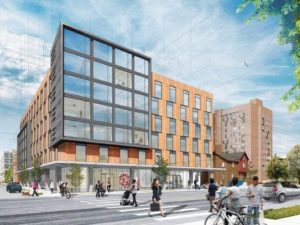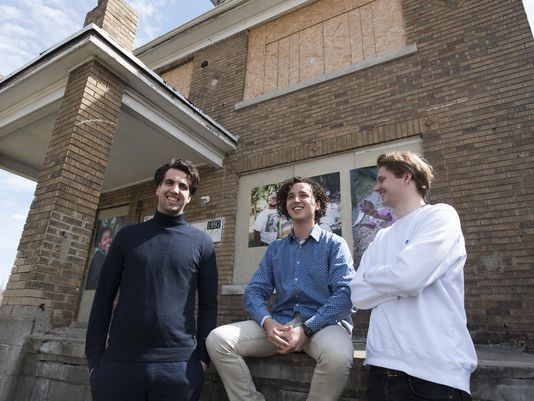Wealth of Nations Seeks The Green In Green
Welcome to the initial installment of what should be (emphasis on should) a weekly review of all things I find interesting or just happen to come across in commercial real estate. It will focus mostly on Detroit, but not exclusively. My interests, like my talents and my comic book collection, are diverse. I’ve humbly entitled it “Wealth of Nations.” Primarily because it sounds cool, but also because I can out-dilettante anybody.
So, this week we sample the sizzle and the steak of the Green Movement. There’s no doubt that SustainableTM can be a Love Train of government, developers, environmentalists and normal folk. Who doesn’t like a party that has something for everyone? Green initiatives often become a Rorschach Test for the observers. We see what we want to see. If environmentalism is your calling card you see a tepid but at-least-it’s-something effort to get people to think differently. For developers it can be a point of differentiation in a competitive market. For Mayor Mike Duggan and his team, yesterday’s announcement of a “Green 2030 District” in Detroit, was clearly an election year “Hey we’re doing something, right? Right??” But also it’s pretty clear that it’s an attempt to monetize the warm fuzzies associated with being Green without requiring any real investment or effort. Basically get at that green in Green while hosting a nice networking launch event and scoring some political swag.
As I mentioned in a quick LinkedIn post yesterday, I would prefer more concrete Green efforts that focus on creating a new approach to Detroit’s neighborhoods with their overabundance of vacant land and underused buildings. A Green District consisting primarily of Downtown and Midtown doesn’t really move the needle. Those areas are what they are. A Green District consisting of a chunk of the eastside of Detroit has the ability to be a game changer however. It could change the way we think about land and building use. It could marshal resources to focus more cash and attention on the neighborhoods. I’m thinking that efforts along the line of what these guys are trying to do are much more meaningful long term to Detroit becoming a sustainable city than Comerica Bank signing on to yet another USGBC branding initiative. But I could be wrong.
There was another announcement however for which I am unabashedly excited and have abandoned all cynicism. The new development led by Develop Detroit in the Sugar Hill Arts District is a phenomenal next step.

Sugar Hill – courtesy City of Detroit
The best part of it is that its team consists of fresh design and development talent in the form of Phil Freelon and Sonya Mays. We need new players to augment Detroit’s perspective and potential. The exceptionally talented Michael Poris is also playing a key role.
I will be the first to admit that renaming existing areas of the city with catchy brands is prima facie annoying and can be a form of cultural appropriation. However, there are cases when a name helps to coalesce ideas in a given area that have formed organically. In the best cases, the name captures the essence of the hopes and expectations of its inhabitants. Sugar Hill Arts District is an example of a moniker that works. I therefore wholeheartedly endorse this new project adopting and amplifying it. May the name and the project become as successful and game changing as the Cass Corridor to Midtown transition has been.
-WEM


Comments (1)
[…] Neighborhood Plan, but election year sops like the Re-Store (and the “Green” program we discussed last week) disperse too few resources over too wide an area to be taken as anything other than a political […]